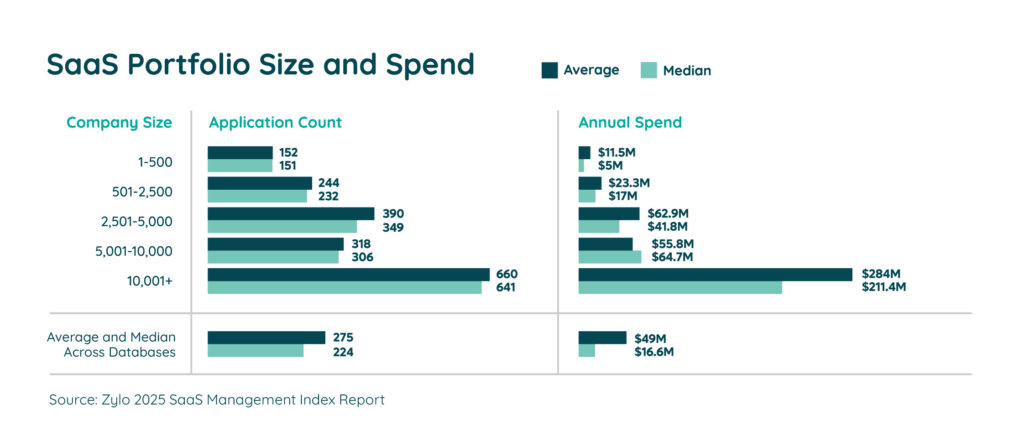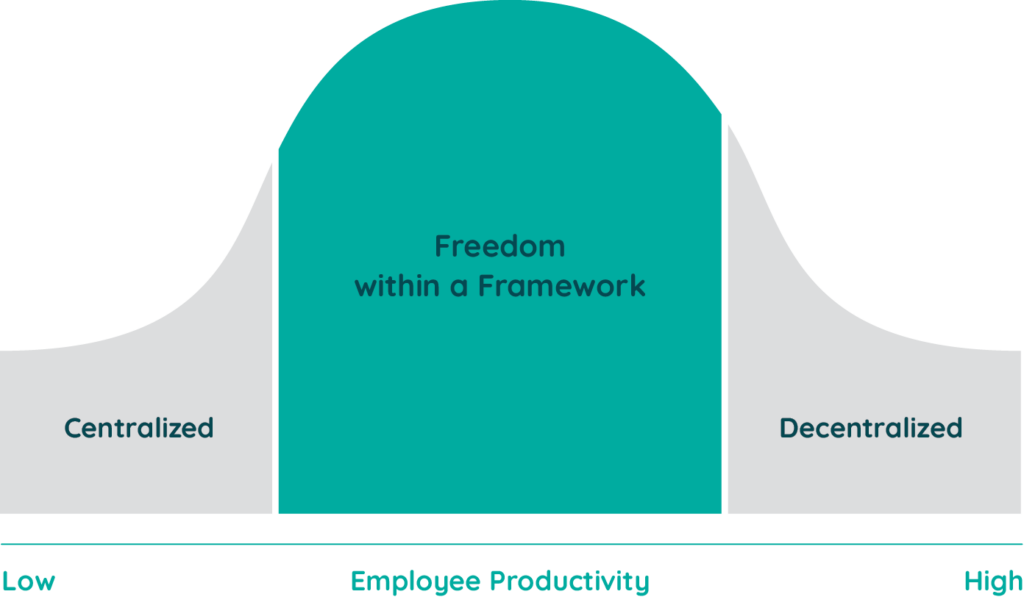Table of Contents
The average organization today has 275 applications in its portfolio and spends $49M a year on SaaS. The SaaS explosion is not just due to businesses trading in legacy systems for cloud software — SaaS is easy to acquire, and everyone is a buyer.
Low costs and ease of acquisition shifted SaaS procurement from IT teams to individual employees making purchases with a company credit card. When SaaS purchases lack governance, it causes a proliferation of duplicate subscriptions, functional overlaps, and reduced utilization, which all lead to waste.

But you can’t take action if you don’t know what you’re up against. Ongoing discovery of all applications proves mission critical to knowing what you have, how much you’re spending, and any risks you face from unvetted software.
Establishing a SaaS management practice helps you maximize adoption, save money, and head off potential security and compliance risks. Many of which result from unknown apps in your environment, also known as shadow IT.
While the concept of SaaS management may seem new to your organization, you may already practice it to some degree. Often, elements of SaaS Management show up as parts of other, better-known disciplines. Or, in some cases, SaaS Management (or parts of it) goes by a different name.
Read on to learn what existing business practices are addressing components of SaaS management. But first, let’s level-set on what SaaS management is.
What Is SaaS Management?
With holistic SaaS Management, businesses proactively manage, optimize, and govern all the SaaS applications within their portfolio through inventory, license, and renewal management.
Technology leaders discovered the need for a dedicated SaaS Management approach in response to the unique attributes of SaaS applications in a business environment.
Key benefits of a comprehensive SaaS Management strategy include:
- Gaining full visibility of all licenses
- Reducing risks from unmanaged applications
- Maximizing contract value
- Anticipating and planning for renewals
- Improving IT collaboration across the organization
- Increasing effectiveness of users who deploy SaaS applications
Next, let’s look at some of the key components of this multidisciplinary practice.
Application Portfolio Management
As businesses scale, so do their software portfolios. Today, the average enterprise sees an average of 12 new applications enter its environment every month. Often, each application has individual terms of service and license agreements. Thus, managing all of your organization’s SaaS applications with manual processes becomes nearly impossible.
Application portfolio management (APM)—sometimes called strategic portfolio management—is a process to govern and optimize your SaaS assets to ensure they drive meaningful value for the business. This means managing your digital inventory of applications to evaluate costs, create standards, improve ROI, and drive actionable results.
Application portfolio management enables an organization to:
- Create complete visibility of applications
- Optimize current licenses
- Rationalize the application portfolio
- Manage SaaS renewals
- Ensure compliance and governance across the business
Effective APM needs to be continuous, tracking all changes as the portfolio acquires and eliminates applications. The process ultimately ensures enterprises can align each application to a business need.
Enterprise Architecture
Businesses practice enterprise architecture (EA) to ensure their IT infrastructure aligns with business objectives. EA helps organizations remain nimble as they face technological changes and standardize IT policies to support business goals.
According to CIO, “Modern EA strategies now extend this philosophy to the entire business, not just IT, to ensure the business is aligned with digital transformation strategies and technological growth. EA is especially useful for large businesses going through digital transformation, because it focuses on bringing legacy processes and applications together to form a more seamless environment.”
With SaaS quickly overtaking on-premise software, EA plays a critical role in comprehensive SaaS management.
Software Asset Management
Software asset management (SAM) is a process that considers the full lifecycle of a license, from acquisition to utilization to disposal. Traditionally, SAM applied to on-premise software. Yet, with application acquisition increasingly shifting to employee hands, SAM needs to include SaaS.
With complete discovery of your application portfolio, including SaaS, you can reduce costs by identifying and eliminating unused and redundant apps. Additionally, real-time insights surfaced by SAM enable you to:
- Make data-driven decisions to consolidate or deprovision licenses
- Negotiate more favorable contract terms
- Inform procurement decisions
The Software Asset Manager’s Quickstart Guide to Managing SaaS
Learn MoreDigital Workplace Experience
With employees using an average of 13 apps 30 times per day, SaaS is the glue that connects organizations. Many organizations now invest in digital workplace or workplace experience strategies to deliver optimal employee experiences, regardless if their people are in-office, remote, or hybrid.
A key component of the digital workplace experience involves giving employees a say in the apps they use to do their best work. In fact, Forrester found two-thirds of Gen Z and Millennial information professionals say autonomy is a top priority when it comes to their workplace technology. They want the power to choose their own apps, services, and devices.
Establishing a process called freedom within a framework helps organizations reign in employee purchases while giving workers freedom to choose their preferred apps from a pre-vetted list.

SaaS Operations Management
SaaS operations management, or SaaSOps, is the practice of optimizing operational and security tasks to ensure critical business tools run optimally. SaaS operations managers identify opportunities to streamline and automate these tasks, then act.
Goals may include choosing the right apps to elevate the employee experience, simplifying onboarding processes, ensuring budgets are met, and managing security risks.
SaaS Spend Management
SaaS spend management is a process to help enterprises gain control of their SaaS spend while reducing overall costs. It involves identifying costs, increasing savings, and maximizing value for all SaaS applications in an organization’s portfolio.
Effective SaaS spend management typically involves:
- Identifying all spending sources in the organization and attributing ownership
- Determining the most-expensive applications
- Searching for rightsizing opportunities
- Identifying redundant applications
- Consolidating duplicate subscriptions
Guide to Managing SaaS Costs
Learn MoreSaaS Management Starts with Zylo
To recap, there are numerous well-established business practices today that address components of SaaS management. Often, that’s SAM, APM, enterprise architecture, SaaS operations management, and elevating the digital experience. If your organization practices any of these components, no matter what you call them, you’re likely further along than you realize in this important business practice.
And if just starting out, now’s the time to dive in and establish your SaaS Management practice. Learn why here.

